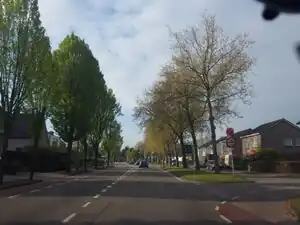Tag:oneway:bicycle=yes
 |
| Description |
|---|
Explicitly specifies that the road is oneway for cyclists, generally not needed and oneway=yes is sufficient. |
| Group: restrictions |
| Used on these elements |
| Useful combination |
|
| See also |
| Status: de facto |
| Tools for this tag |
|
oneway:bicycle=yes explicitly specifies that road is oneway for cyclists (opposite of oneway:bicycle=no).
It is almost always unnecessary if the road is already has oneway=yes[1].
Usage

oneway:bicycle=yes is/can be used:
- For places where, in most cases, bicycles have oneway access, it can be handy for mappers to map that it is not the case for a particular road (
oneway:bicycle=yes). That way it is easy to check if a road has been checked/categorised (oneway:bicycle=no/yes) or not (no oneway:bicycle tag) - For a
highway=pathorhighway=footwayorhighway=pedestrianin combination withbicycle=yesto explicitly specify that the path is only oneway for cyclists but not for pedestrians (highway=footway+bicycle=yes+oneway=yes+oneway:foot=no+oneway:bicycle=) - For other roads that are generally not oneway but is oneway for cyclists
- For roads that used to be
oneway:bicycle=nobut situation changed - explicitoneway:bicycle=may be useful - For roads where some other sources claim to be
oneway:bicycle=nobut it is incorrect - A road that contains bicycle infrastructure such as
cycleway=opposite_lanethat usually would result inoneway:bicycle=nobut road is anyway oneway for cyclists (this is usually result of badly designed road or a temporary state)
Not needed usage
- In combination with
highway=cycleway. To indicate a cycleway is one direction, just useoneway=yes. - In combination with
oneway=yeswhere it adds no useful info
References
- ↑ there are extremely rare cases such as painted contraflow lane (
cycleway=opposite_lane) on road where cycling remains legal only in one direction (oneway=bicycle+oneway:bicycle=)